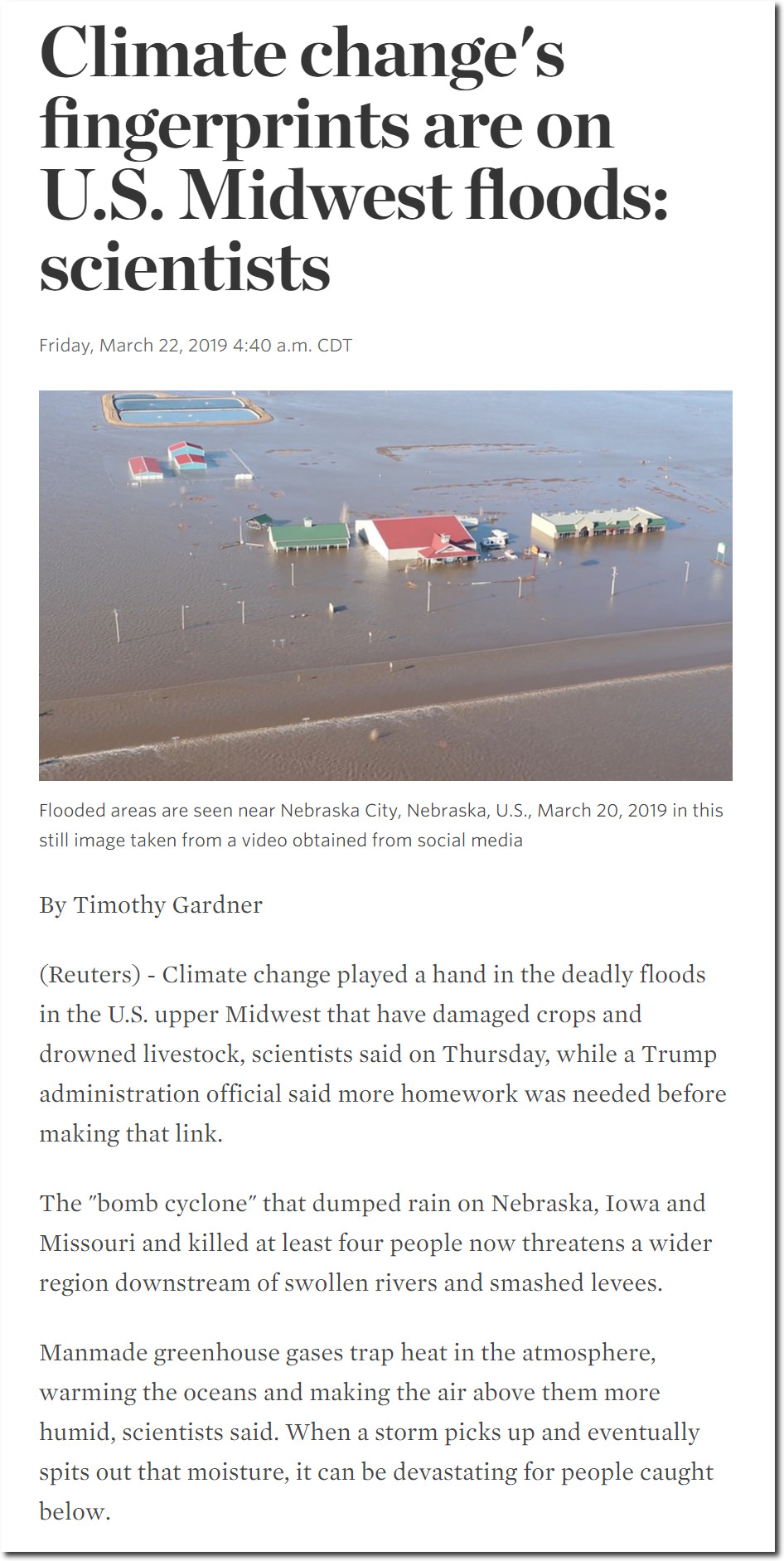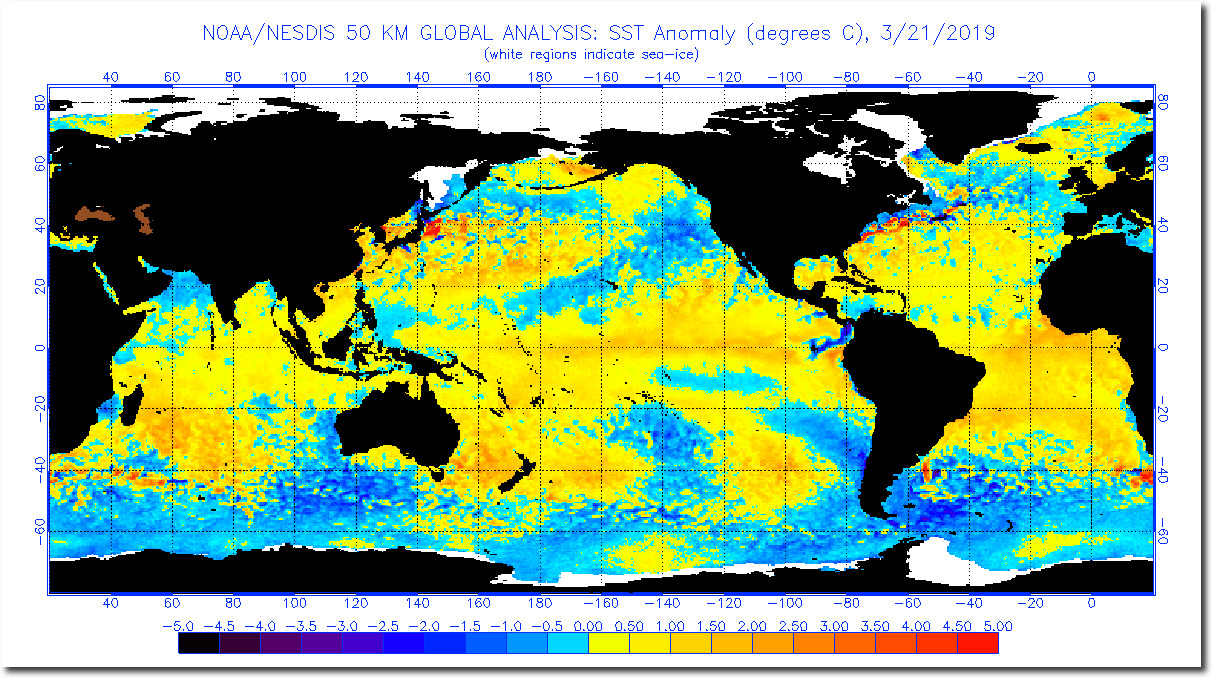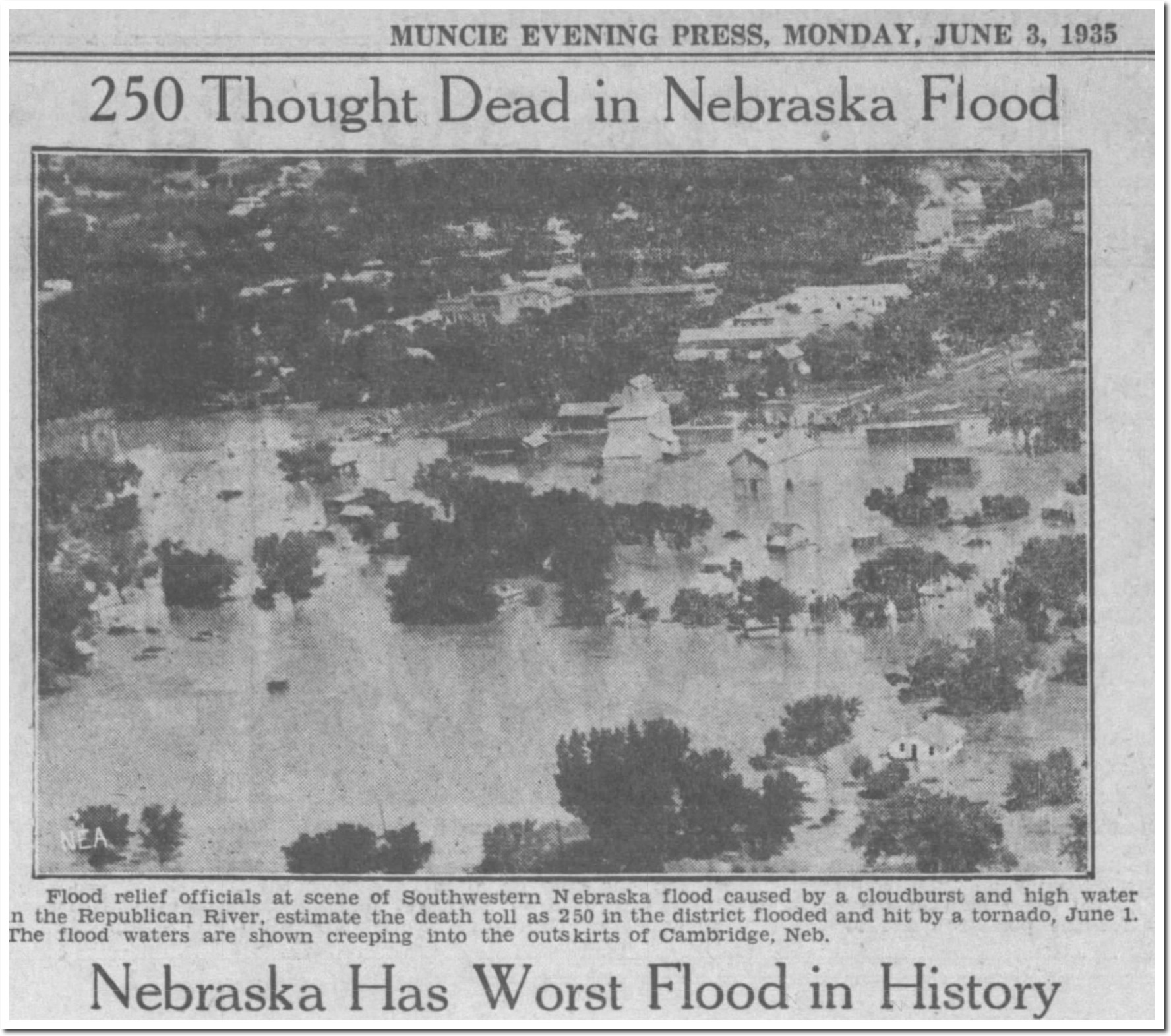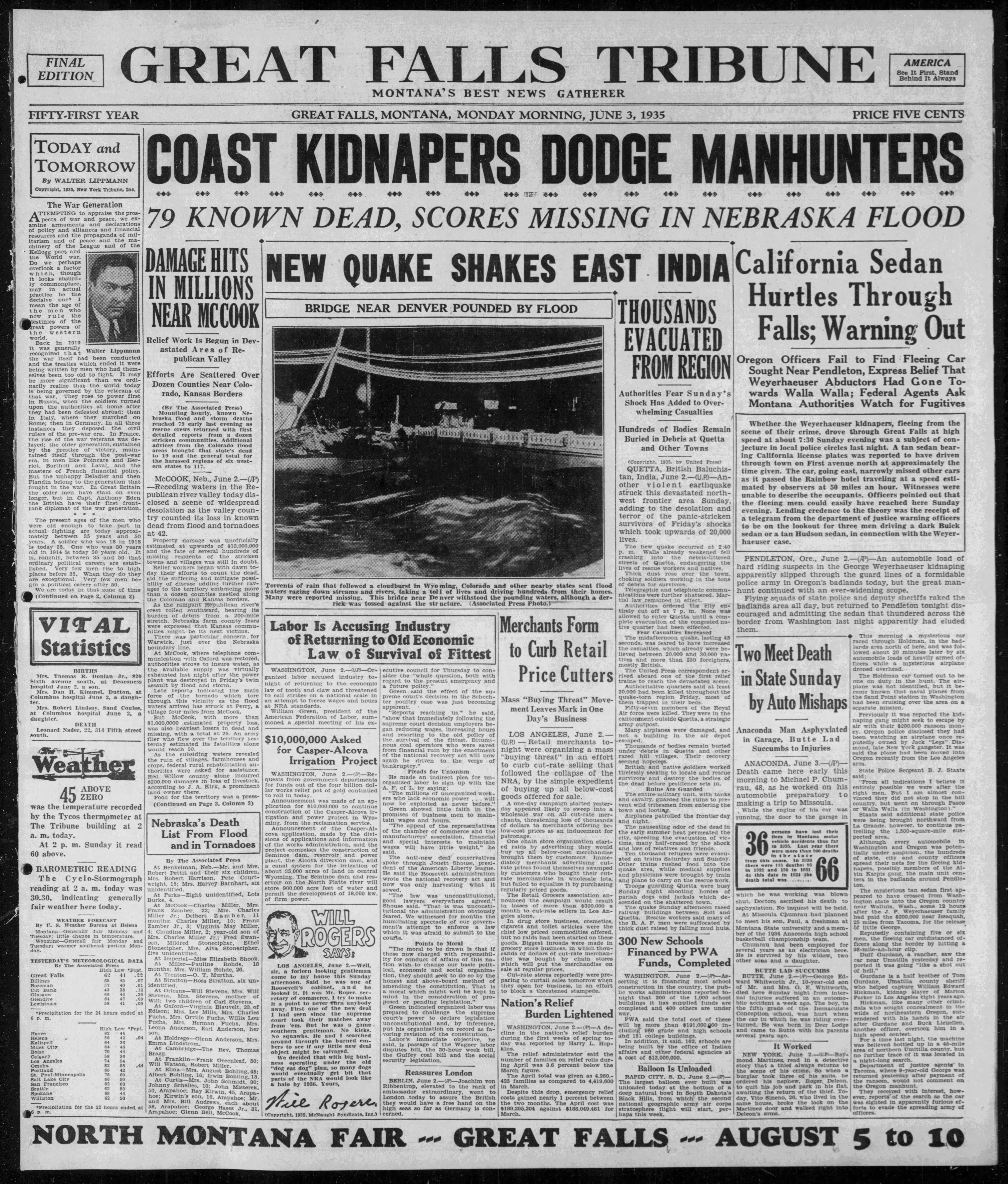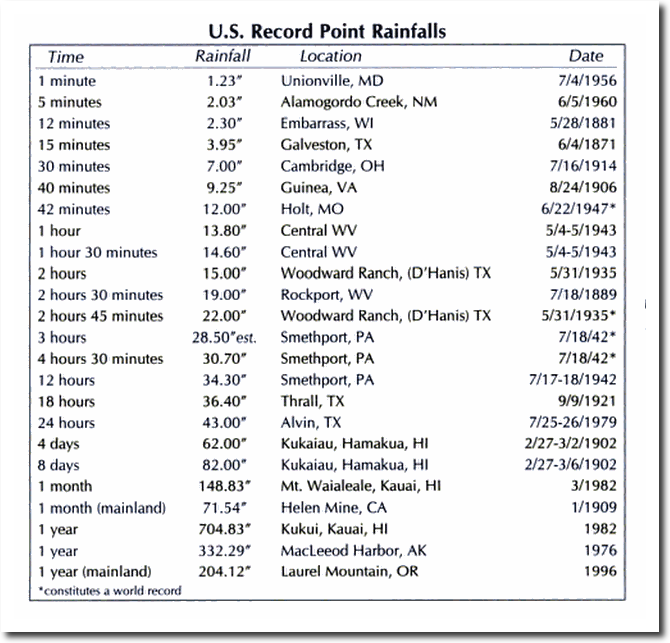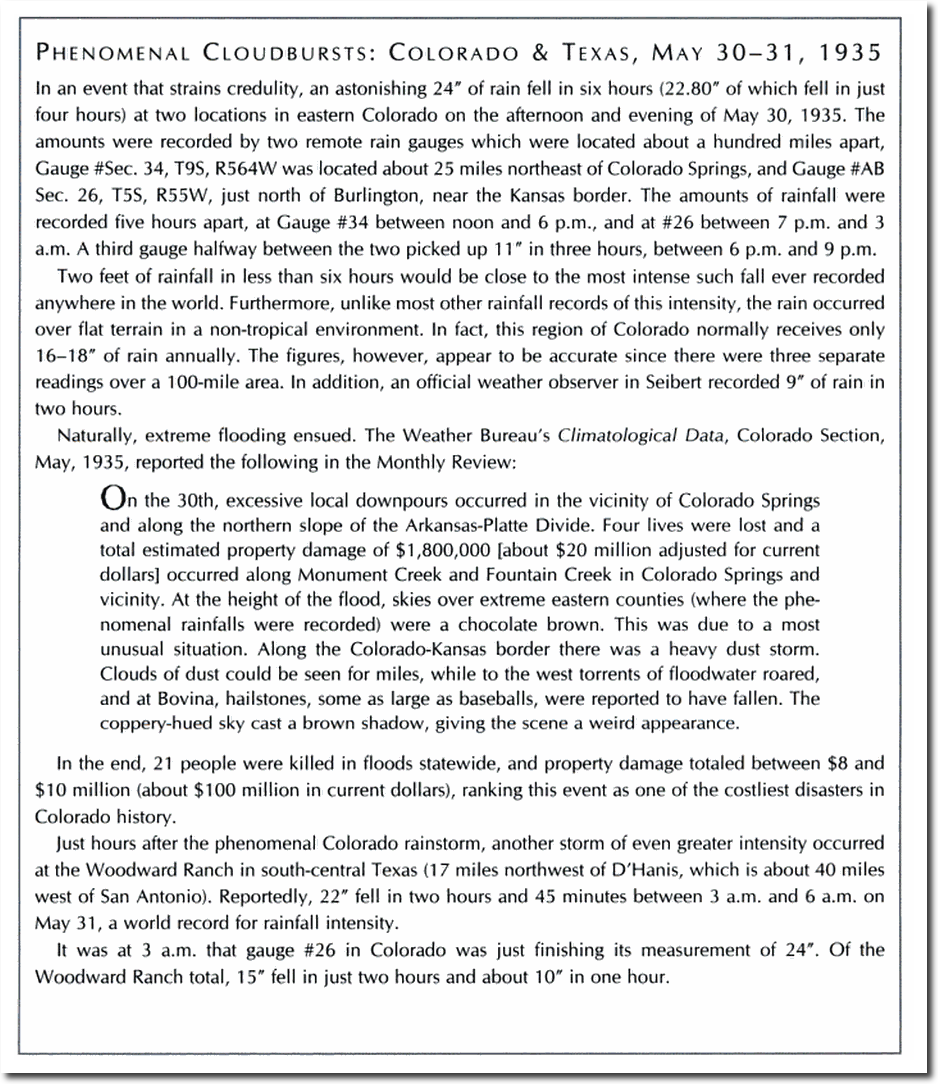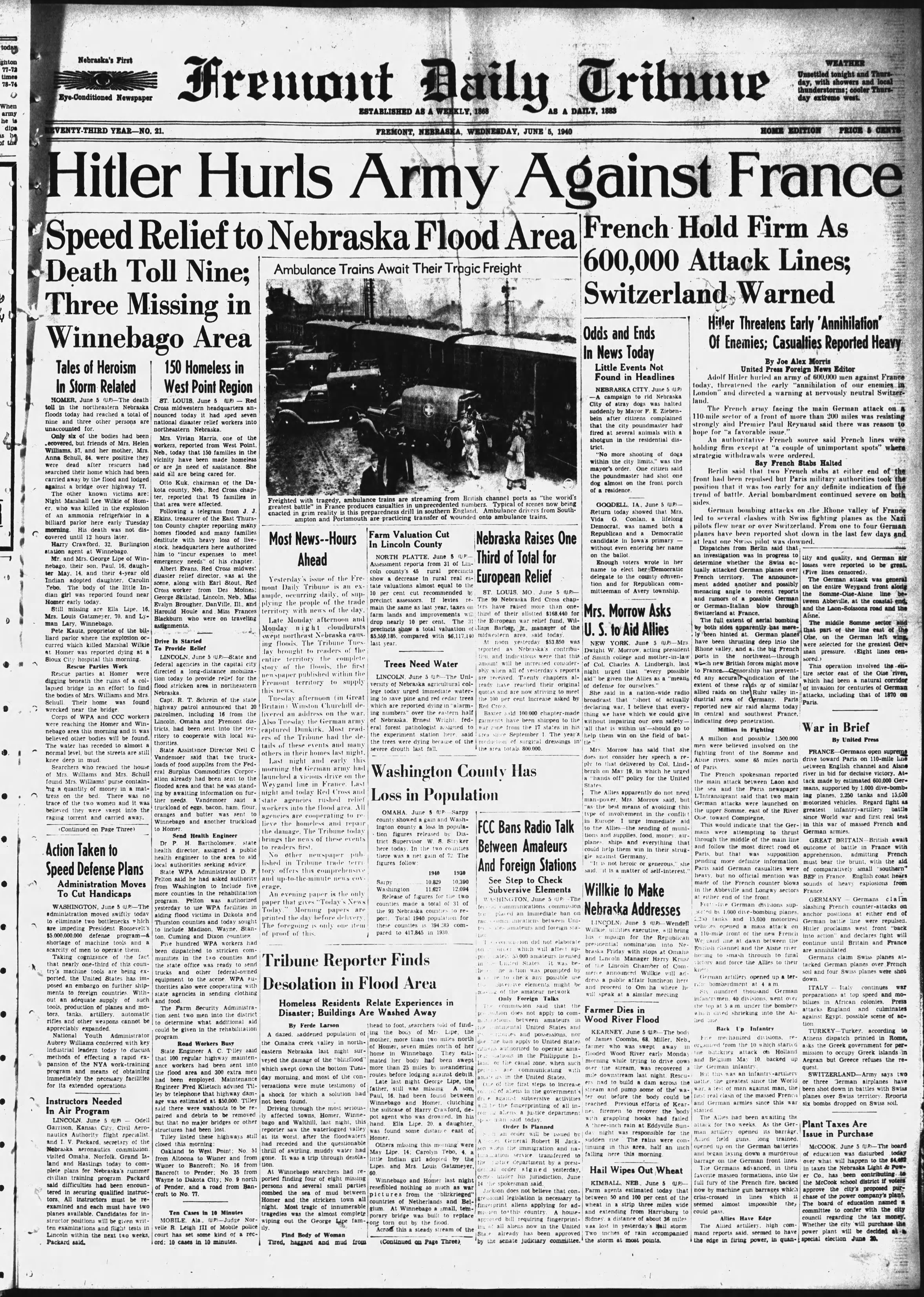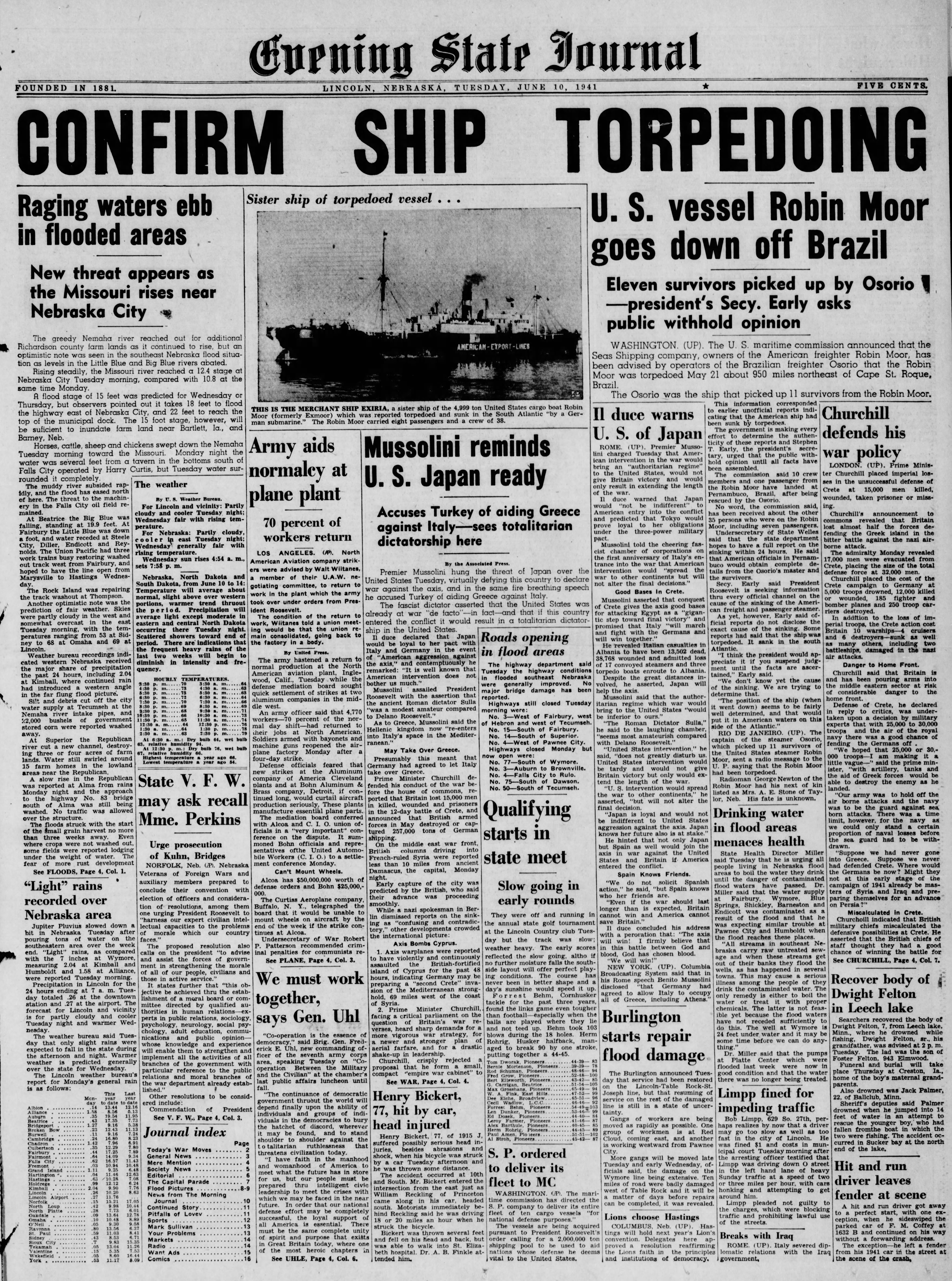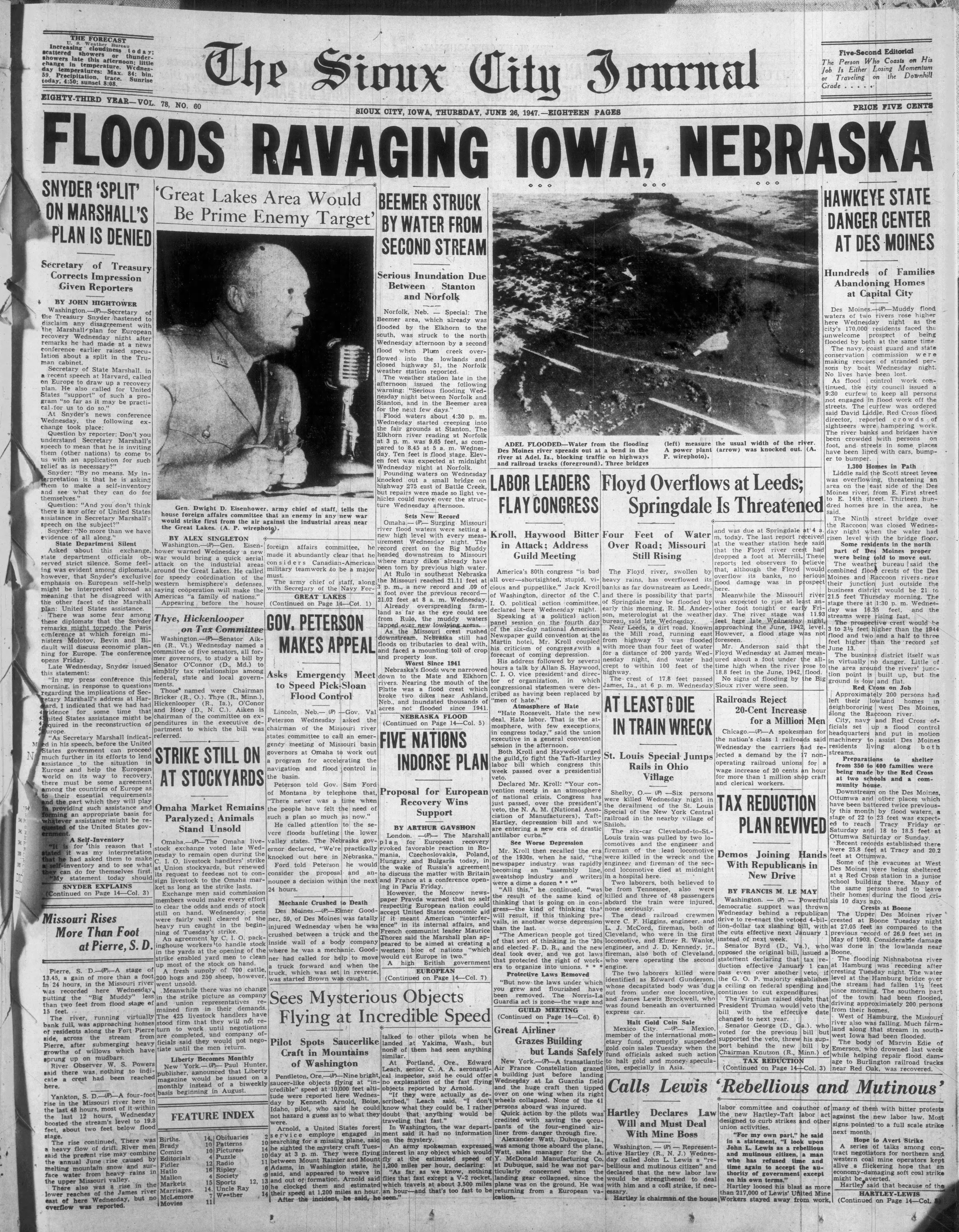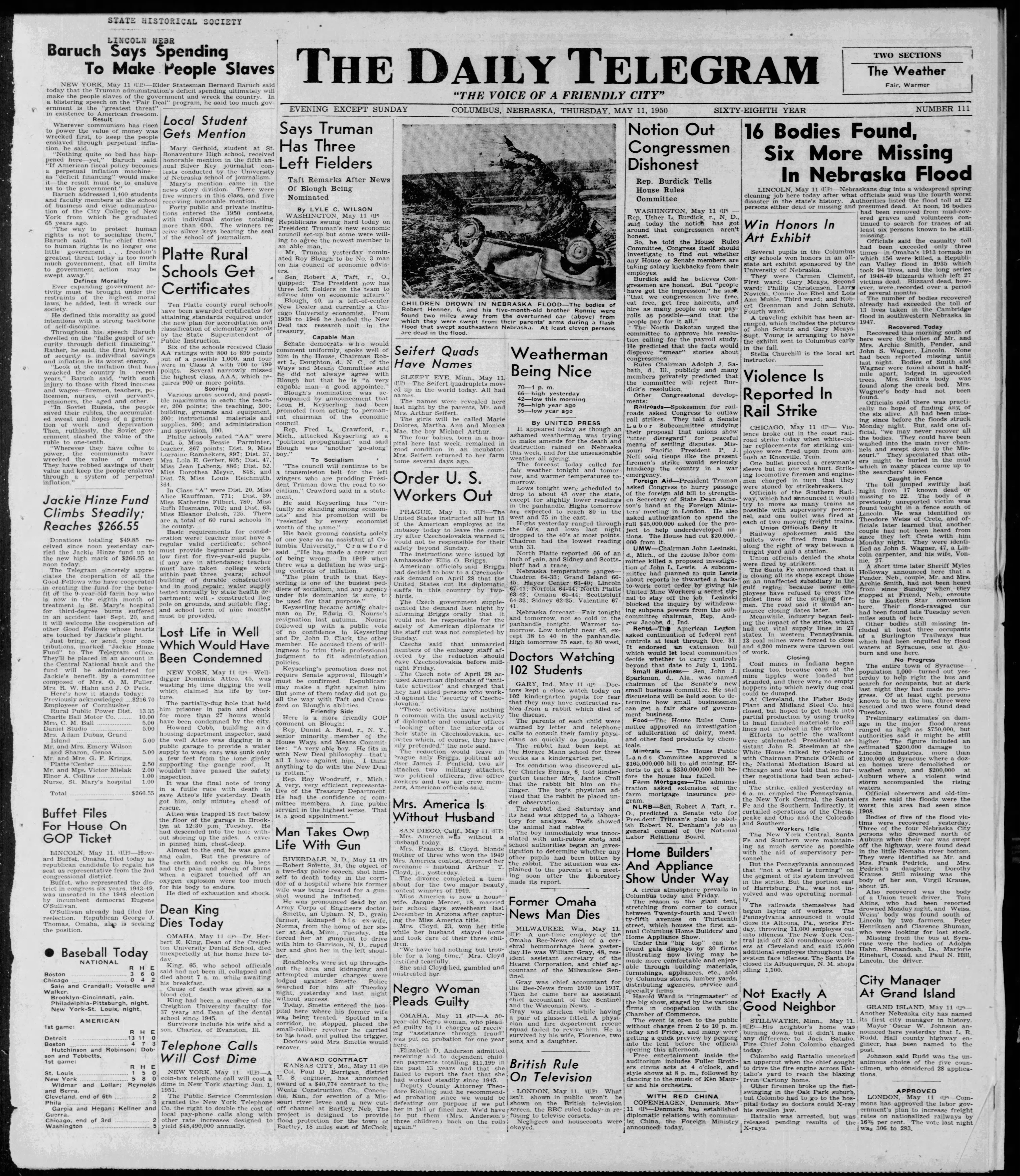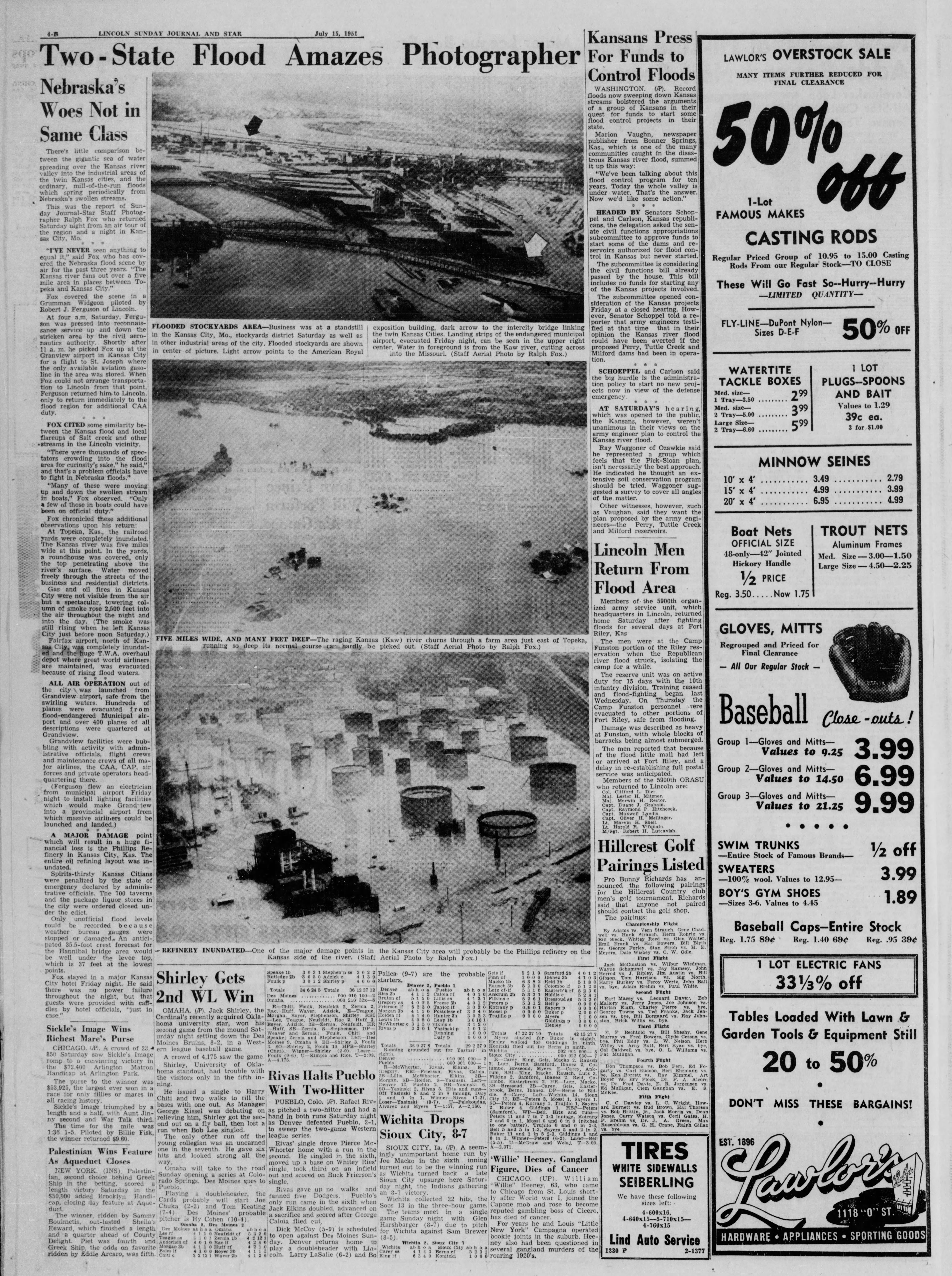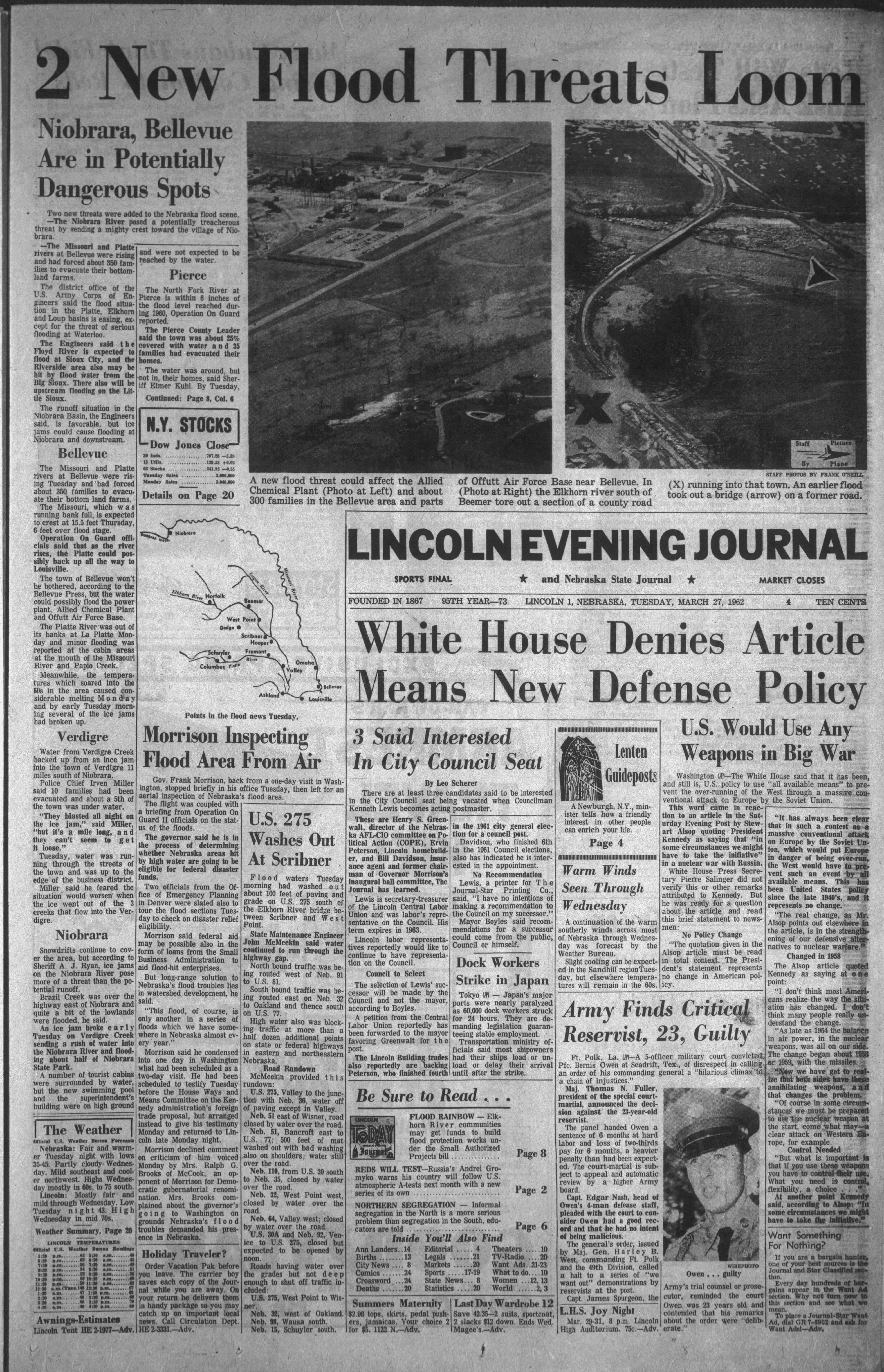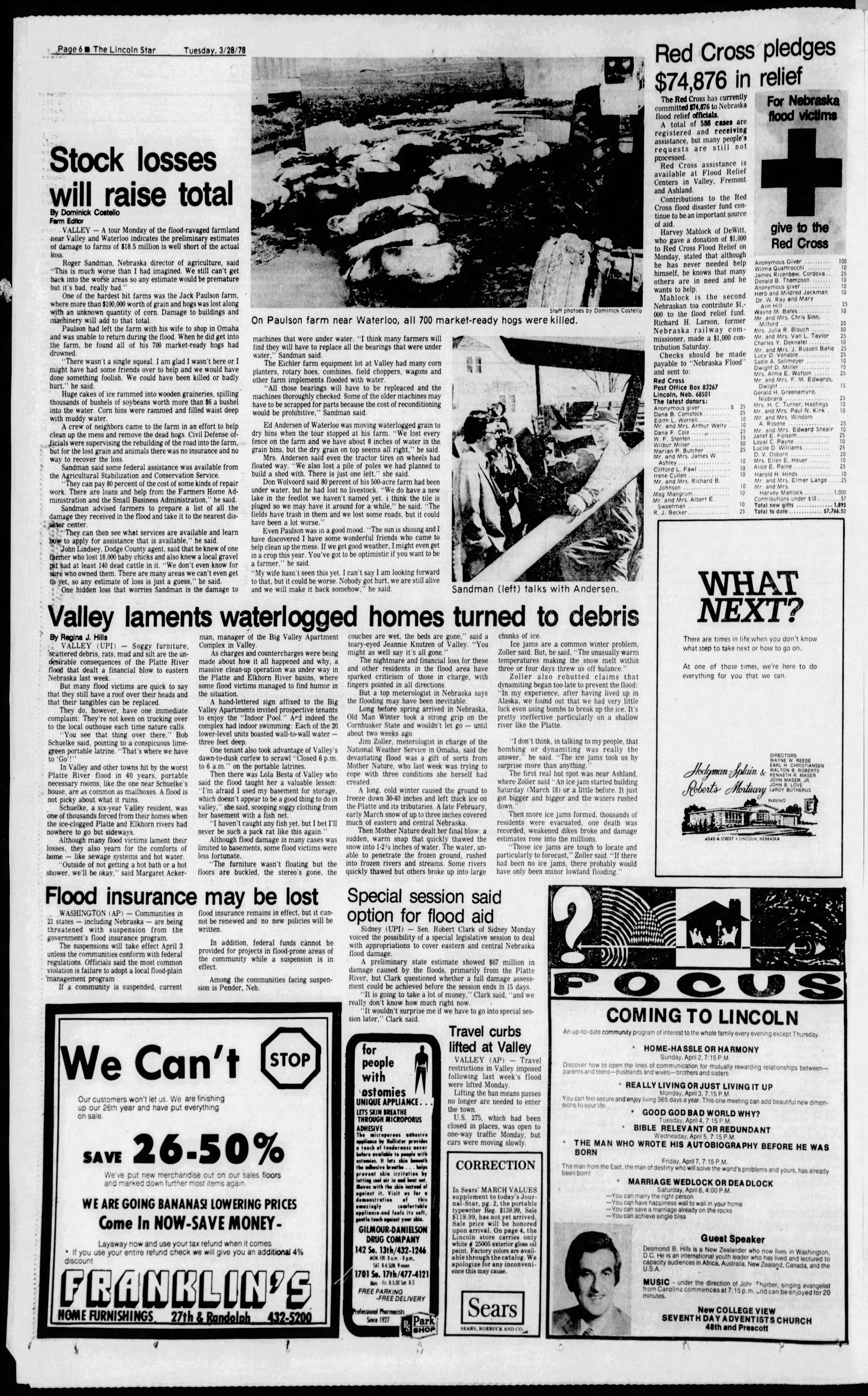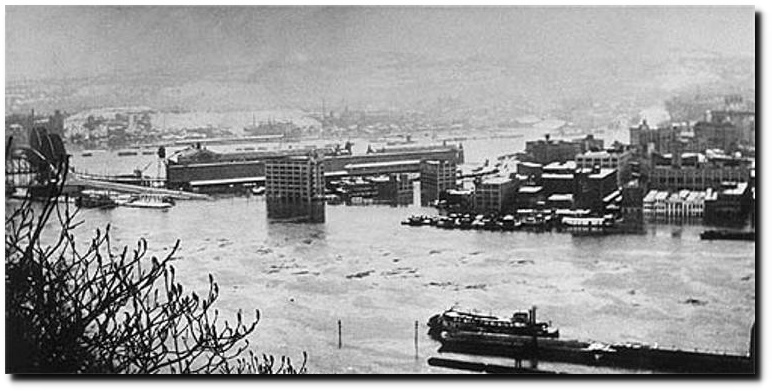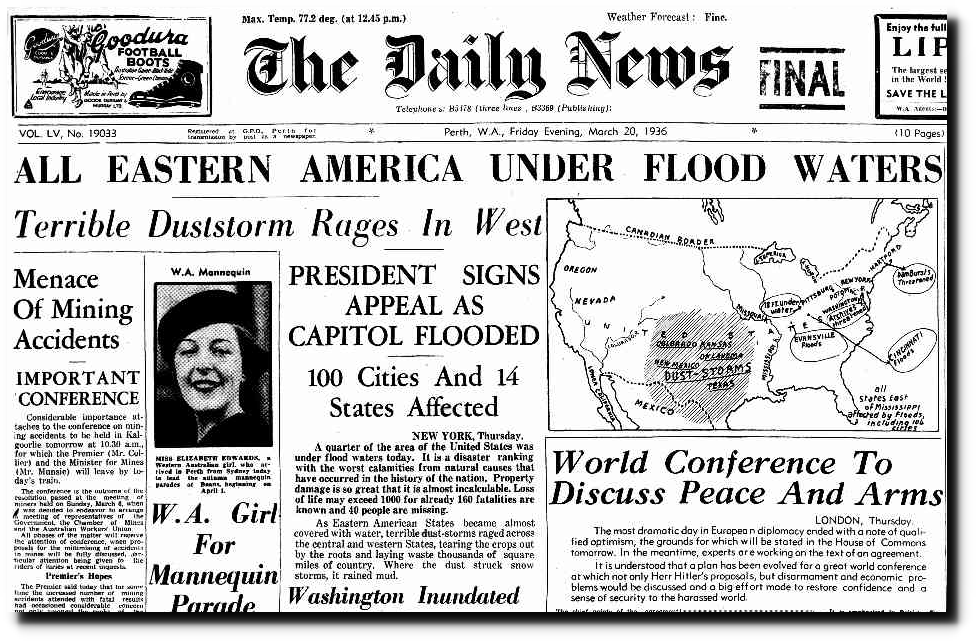Our top climate scientists are blaming floods in Nebraska on global warming
Manmade greenhouse gases trap heat in the atmosphere, warming the oceans and making the air above them more humid, scientists said. When a storm picks up and eventually spits out that moisture, it can be devastating for people caught below.
“The atmosphere is pretty close to fully saturated, it’s got all the water it can take,” said Michael Wehner, a senior scientist at the Lawrence Berkeley National Laboratory.
Big storms like the bomb cyclone and Hurricane Harvey, which smacked Houston in 2017 with record downpours, are where the impact of climate change can most clearly be seen, he said, adding that climate change’s fingerprints were all over the recent storm.
“I don’t think it’s a starring role, but it’s a strong supporting role,” said Kevin Trenberth, a senior scientist at the U.S. National Center for Atmospheric Research, a federally-funded office, of climate change’s role in the Midwest floods.
He said the bomb cyclone was carrying vast amounts of moisture from the Pacific up to 1,500 miles (2,400 km) away.
“The atmosphere is pretty close to fully saturated, it’s got all the water it can take,” said Michael Wehner, a senior scientist at the Lawrence Berkeley National Laboratory.
Climate change’s fingerprints are on U.S. Midwest floods: scientists | News | The Mighty 790 KFGO
It has been the coldest February/March on record in Nebraska so far. (Average temperatures will rise a little before the end of the month, and may move this year out of the coldest spot.)
The reason the atmosphere is saturated, is because of the cold air – which can hold less moisture. This is something most science students learn in high school, but apparently our top PhD climate scientists are unaware of it.
Sea surface temperatures are also mostly below normal west of the US. The claims by the climate scientists have no basis in reality, which is standard practice for their profession.
anomnight.3.21.2019.gif (1174×640)
Nebraska has a long history of floods.
The 1935 Nebraska flood killed more than 100 people and was associated with the world record rainfalls in Texas and Colorado.
03 Jun 1935, Page 11 – Muncie Evening Press at Newspapers.com
03 Jun 1935, Page 1 – Great Falls Tribune at Newspapers.com
On May 31, 1935 Woodward Ranch, Texas set the world record with 22 inches of rain in less than three hours.
Colorado got nearly that much rain a few hours earlier.
Extreme Weather: A Guide & Record Book – Christopher C. Burt – Google Books
1940 Nebraska flood
05 Jun 1940, 1 – Fremont Tribune at Newspapers.com
1941 Nebraska flood.
10 Jun 1941, Page 1 – Lincoln Journal Star at Newspapers.com
1947 Nebraska flood
26 Jun 1947, 1 – Sioux City Journal at Newspapers.com
1950 Nebraska flood.
11 May 1950, 1 – The Columbus Telegram at Newspapers.com
1951 Nebraska flood
15 Jul 1951, Page 62 – The Lincoln Star at Newspapers.com
1962 Nebraska flood.
27 Mar 1962, 1 – Lincoln Journal Star at Newspapers.com
1963 Nebraska flood
27 Jun 1963, Page 10 – Las Vegas Daily Optic at Newspapers.com
1978 Nebraska flood
28 Mar 1978, 6 – The Lincoln Star at Newspapers.com
Similarly, the record floods of 1936 came after the coldest February on record in the US.
20 Mar 1936 – ALL EASTERN AMERICA UNDER FLOOD WATERS
Climate science and journalism – all lies, all the time.

